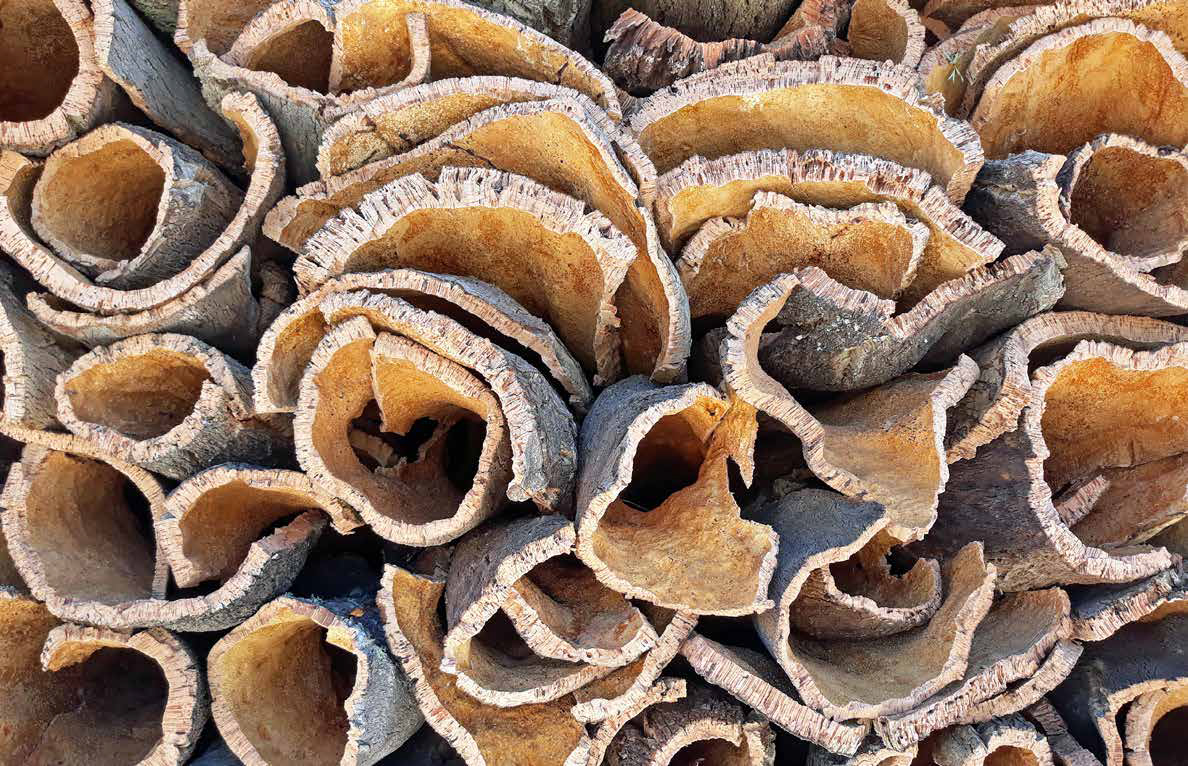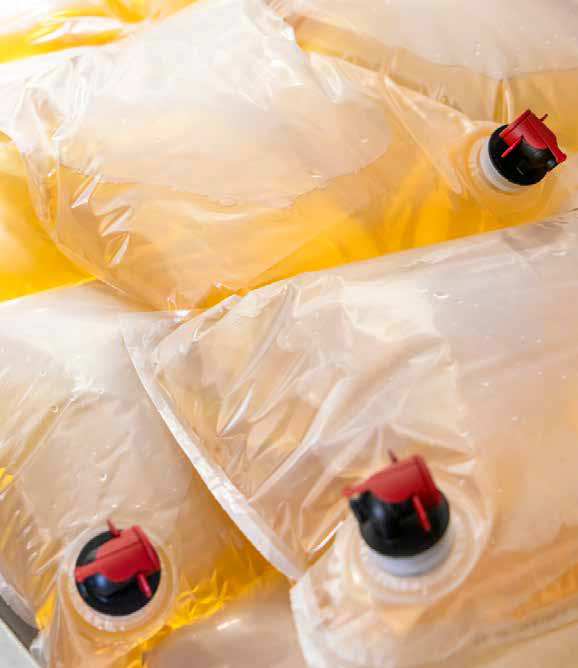Reducing Your Carbon Footprint, One Wine Purchase at a Time

This article originally appeared in the Winter 2021/2022 print issue of Quench Magazine.
The impact of climate change on our planet has been frightening.
You can see it in extreme weather events like the wildfires in Australia, British Columbia and California. Hail regularly reduces the crops of beloved wine regions such as Burgundy and Champagne, and frost damages vineyards that were never threatened before.
Consumers want to be part of the solution but they are not sure how. One of the biggest differences we can make is by purchasing a wine sold in packaging with a reduced carbon footprint.
The wine industry revolves around tradition. There is an emotional attachment around the ritual of opening a bottle of wine at the table, but there is also a preconceived notion that a heavy bottle contains higher quality wine than a lightweight bottle. Be-cause of this the wine industry has been slow to adopt alternative packaging, which is one of the most effective ways of reducing their carbon footprint.
Nordic countries have been good at embracing environmentally friendly packaging and communicating to consumers the benefits to the environment. Alko, the monopoly in Finland, shared information that shows the carbon footprint associated with different types of packaging, making it easier to understand. While a traditional glass bottle of wine (540 grams) has a 675 CO2e/L, a lightweight glass bottle (420 grams) has a 525 CO2e/L. Better yet, an aluminum can has 190 CO2e/L, a wine pouch 96 CO2e/L and a Bag in Box 70 CO2e/L.
Considering that 90% of the wine sold is consumed within the first two weeks of purchase (Jancis Robinson 2021),
one must wonder why there is not a large amount of everyday drinking wines sold as Bag in Box.
Sure, they don’t have the same shelf life as a bottle of wine, but this is not relevant if the wine is meant to be enjoyed when fresh and youthful, which is the case for most of the wine sold.
The Systembolaget (government-owned liquor store chains) in Sweden is inspiring in that regard. Fifty-one percent of the wine sold by the Swedish monopoly is in Bag in Box (BIB), and it’s good quality wine! Many producers have had to adapt if they want to stand a chance at seeing their wine listed in that market. Hopefully, other countries will be inspired by the success of BIB in Sweden, though education and communication is key.
Elsewhere, most wines sold in BIB are entry level and inexpensive, so consumers associate BIB with low quantity wines. But mid-price and premium wine meant to be consumed young are also suited to this type of packaging. réZin, an import company in Québec that represents environmentally aware producers, recently sold a qualitative Beaujolais in a BIB 3L from the reputable producer Christophe Pacalet, at the Societe des alcools du Quebec (SAQ). The wine sold out in four weeks. When quality and good communication are ‘au rendez-vous,’ success is too. More of these initiatives need to be embraced.
Another type of packaging that should be embraced for early drinking wines are aluminum cans. Currently, the wine industry is losing popularity with younger generations such as millennials and
they drink less and therefore opt for hard seltzer and ready-to-drink cocktails sold as a single serving. Many surveys conducted by research firms such as Wine Intelligence have shown that sustainability has also had a big impact on the purchasing decisions of those generations. This information makes a strong case for selling wine meant for early consumption in ready-to-drink cans, with producers reaping both a business and environmental advantage. Once again though, a good marketing and communication strategy is key to convey this information.
Environmentally friendly packaging has another advantage in the reduced carbon emissions during transportation. For example, most wines sold in BIB are bottled at the destination. This means they are shipped in either a Flexitank or an ISO container. While a 20’ dry container contains 9 900 litres of wine, a Flexitank contains 24 000 litres of wine. Audrey Chaufournier, director of quality, security and environment at Gabriel Meffre, says they have reduced their carbon footprint considerably by adopting lightweight bottles but also, from the reduced carbon emissions ensued from transporting lighter weight bottles.

The combination of an environmentally friendly packaging and reduced carbon emissions during transportation has the biggest impact on the carbon footprint of a bottle of wine.
The choice of closure is also important. In the last couple of decades, cork fell out of favour with many producers. The increasing problem of cork taint was to blame. Wine-makers did not want to risk having their wines contaminated with 2,4,6 trichloroanisole (TCA), the chemical compound responsible for tainting wines with mouldy and wet cardboard aromas. Alternative closures, especially Stelvin, became prevalent in new world producing regions where tradition is not as important. But cork is gaining popularity again as improved technology has allowed cork producers such as Amorim and Nomacorc to greatly reduce TCA problems. More importantly for the environment is the carbon footprint associated with cork.
Amorim has done a fantastic job at communicating the sustainability of cork. A cork tree can live up to 200 years. The first harvest takes place when the tree is 25-year-old, and every time cork is harvested the tree’s ability to retain carbon dioxide (CO2) is increased by five.
According to Amorim, cork oak forests retain more than 14 million tons of CO2. Carlos de Jesus, Director, Marketing & Communication at Amorim Cork, says that each ton of cork produced retains 73 tons of CO2.
When it comes to the cork itself, the spectrum of absorption of CO2 varies between -87 grams of CO2 per unit (cork for spirits) to -592 grams (sparkling wine cork).
In addition to that, cork is recyclable. It can be transformed to many other secondary products including shoes, bags, sports equipment, furniture and cork floor. And, cork is biodegradable. This means you can put your cork in your compost if you don’t have a dedicated recycling depot near you.
The full circle of sustainability speaks strongly in favour of using cork as a closure. Stelvin can also be recycled; however, most consumers do not recycle their screwcaps and in contrast to cork, Stelvin is not biodegradable, and usually just ends up in the landfill.
In the last few decades many other environmentally friendly and innovative packagings have been developed using such material as flaxseed, bioplastic, recycled cardboard and polyethylene furanoate. Corks made from renewable polymers derived from sugarcane and capsules made of sugarcane are also available. Some producers have even stopped using labels and adopted serigraphy. Solutions exist, and the future is likely to offer even more options for producers. Consumers must follow. Every purchase sends a strong message to importers, distributors, retailers and producers that wine drinkers are ready to leave behind traditions to ensure a sustainable future. Use your purchase to voice what matters. If the bottle is heavy, don’t buy it.
FIVE WINES OFFERED IN ENVIRONMENTALLY FRIENDLY PACKAGING:
Vignobles JeanJean, Le Pive Gris Sable de Camargue IGP, aluminium cans 250ml $5.50, BIB 3L $50.25
Dry, light and crisp with fresh notes of peach and grapefruit mingling with delicate flowers. A great wine to sip on to bring a little sunshine to the day when summer seems so far away. Offers good value for money.
C’EST DANS LE SAC 2020, Coteaux du Pont du Gard IGP, 1.5L $29.75
Made by the respected Southern Rhône cooperative Les Vignerons d’Estézargues. Established in 1965, the co-op started to make natural wine in the 1980s. C’EST DANS LE SAC is a project developed by the import wine company réZin. The owners wanted to offer a well-priced organic wine with a reduced carbon footprint. Full body with supple tannins and generous notes of cassis and plum mingling with black pepper and garrigues aromas. A gentle touch of licorice and violet adds complexity. Good for you, and good for the planet.
Christophe Pacalet Beaujolais Les Marcellins 2020, BIB 3L $58.50
I can’t think of a better wine for everyday drinking. Dry and light with delicate tannins and mouth-watering notes of raspberries and strawberries, this Beaujolais is suited for the aperitif as it is around the table. Its versatility makes the wine ideal to drink over many days, and the BIB is perfect for that. Serve slightly chilled. Lasts 8 weeks once opened.
Sumarroca Tuvi 2020, Penedès $15.50
Sustainability is at the heart of every decision at Sumarroca. The capsules are made of sugar cane without aluminium or light in aluminium, and the wine is bottled in a lightweight bottle of 410g. (Xarel-lo 50%, Gewurztraminer 30%, Riesling 10%, Viognier 10%) Dry and aromatic with a charming nose, with aromas of litchee, lemon, white flowers and apple mingling.
Gabriel Meffre Côtes du Rhône Laurus 2019 (lightweight bottle) $19
(Viognier 32%, White Grenache 28%, Roussanne 23%, Marsanne 17%)
Gabriel Meffre has done a lot of work and research to find a lightweight bottle that was strong enough to avoid breakage during transportation, and they have succeeded. Full body and rich with silky texture and generous notes of stone fruit and white flowers. The pleasant bitter citrus notes on the finish compensate for the soft acid. A great partner for lobster and scallops.
